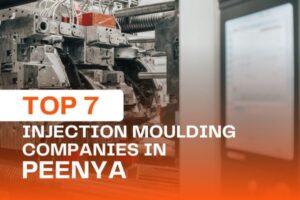Runners in Injection Molding Systems
In the world of Injection Molding, runners play a crucial role in delivering molten plastic to the cavities of a mold. They act as channels that guide the flow of material, ensuring proper filling and formation of the desired parts. There are different types of runners available, each with its own unique characteristics and applications:
Types of Runners in Injection Mold
1. Cold Runner System
The cold runner system uses channels and gates at room temperature to transport plastic into the mold. After each molding cycle, the system produces solidified waste material, including the sprue and runners, which must be removed. Cold runners are ideal for prototyping, low-volume production, and processes requiring frequent material changes.
Advantages:
-
Cost-effective: Requires no specialized equipment or complex maintenance.
-
Versatile: Supports frequent material and color changes.
-
Flexible design: Easily adapts to changes in part geometry.
Disadvantages:
-
Material waste: Generates solidified waste that increases material costs.
-
Longer cycle times: Removing waste adds to cycle time and reduces efficiency.
2. Hot Runner System
The hot runner system eliminates the need for solidified runners by using a heated manifold and nozzles to keep plastic molten throughout the injection process. Molten plastic flows directly from the injection machine to the mold cavities, making this system ideal for high-volume production.
Advantages:
-
Reduced waste: Eliminates runner scrap, lowering material costs.
-
Improved part quality: Prevents defects such as weld lines or gate vestiges.
-
Faster cycles: Maintains melt temperature, enabling quicker injection and cooling.
Disadvantages:
-
Higher initial cost: Requires expensive equipment and complex setup.
-
Maintenance-intensive: Heated components demand regular monitoring and servicing.
-
Limited material compatibility: Some plastics degrade under constant heat.
3. Insulated Runner System
The insulated runner system improves upon the hot runner design by adding insulation between the molten plastic and the cooled mold plates. This reduces heat loss, improving energy efficiency and maintaining consistent melt temperatures.
Advantages:
-
Energy-efficient: Minimizes heat loss, reducing energy consumption.
-
Precise temperature control: Delivers consistent melt flow and part quality.
-
Low material waste: Avoids the formation of solidified runners.
Disadvantages:
-
Increased complexity: Requires additional components and careful mold design.
-
Higher initial cost: Insulation materials raise design and implementation costs.
-
Design constraints: May restrict freedom when designing complex parts.
4. Hot Plate Integration
In some molds, a hot plate enhances performance by providing controlled, uniform heating. This is especially useful when molding high-temperature materials or achieving superior surface finishes.
Advantages:
-
Enhanced part quality: Uniform heating minimizes surface defects.
-
Faster cycle times: Reduces cooling time, increasing production speed.
-
Material versatility: Enables processing of heat-sensitive or high-temp materials.
Disadvantages:
-
Complex mold design: Adds components and control systems.
-
Higher upfront cost: Increases mold investment.
-
Ongoing maintenance: Requires regular inspections to ensure performance.
Types of Runner Designs
The runner shape plays a critical role in optimizing material flow, minimizing pressure loss, and ensuring consistent cavity filling.
1. Straight Runner
This basic design features a direct channel from the sprue to the mold cavities. It distributes material uniformly and is easy to manufacture. Best suited for simple geometries and general-purpose applications.
2. Tapered Runner
Tapered runners gradually reduce in size, improving flow control and reducing pressure loss. They help balance flow in multi-cavity molds and are ideal for precision molding of complex parts.
3. Fan or Fan Gate Runner
This design uses thin, fan-shaped gates that distribute material evenly, particularly across thin-walled parts. Fan gates minimize gate marks, making them suitable for cosmetic or transparent products.
4. Tab or Disk Runner
With a flat, disk-like profile, this runner type ensures even flow distribution in multi-cavity molds. It’s a common choice for high-volume production of similar parts.
5. Branched or Tree-Like Runner
A branched system splits from a main channel into multiple smaller ones, ensuring balanced flow to each cavity. It’s commonly used in complex, multi-cavity molds.
6. Loop or Ring Runner
This closed-loop design promotes uniform filling and minimizes pressure drop. It works well for large or bulky parts in industries like automotive and industrial manufacturing.
Conclusion
Understanding the strengths and limitations of different runner systems allows manufacturers to choose the best approach for their production needs. Each system—whether cold, hot, or insulated—offers trade-offs in cost, efficiency, and quality. Likewise, runner shape influences flow behavior and part consistency. Partnering with experts like Trumould can help you optimize your mold design for improved efficiency, lower waste, and higher part quality.




